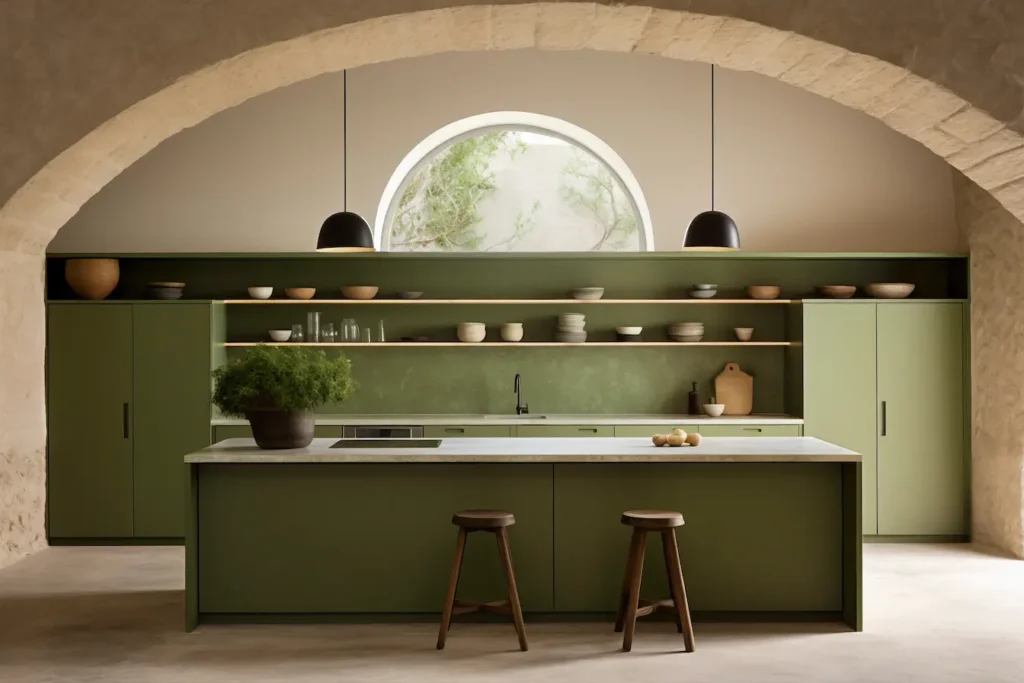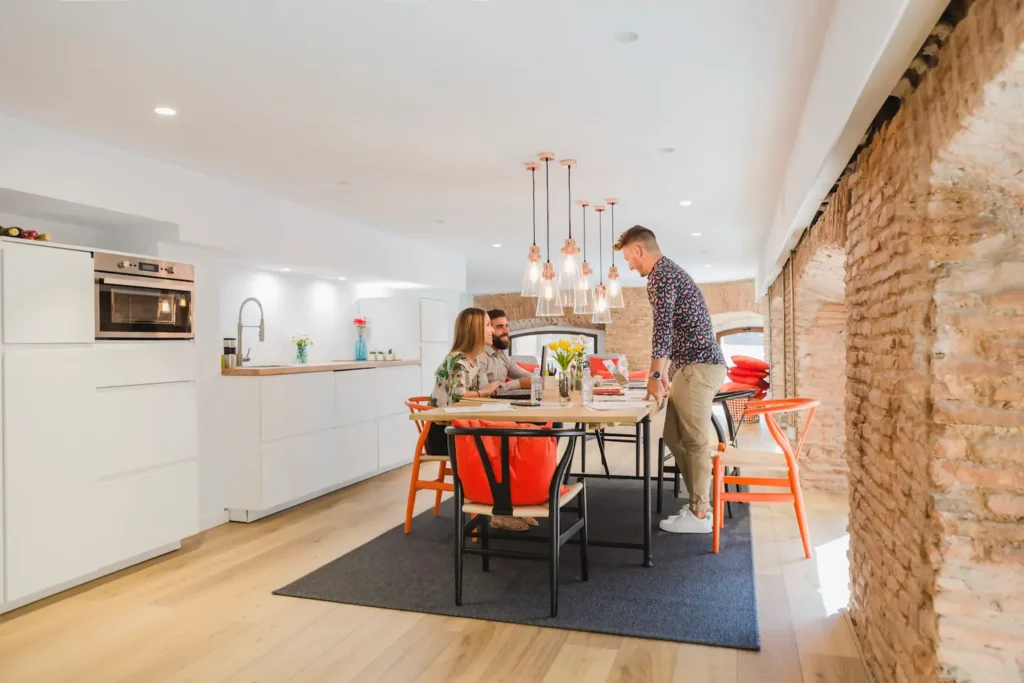
Kitchen Island vs Table: Which Is Best for You?
When designing or renovating your kitchen, one key decision stands out: Should you choose a kitchen island or a table? Both options have their unique advantages and drawbacks, catering to different needs and preferences. A kitchen island offers multi-functional benefits like extra storage, food preparation space, and modern aesthetics. On the other hand, a table provides a traditional setup perfect for family meals and social gatherings. So, which is better for your home? Let’s dive into a detailed comparison to help you make the right choice.
What Are the Key Differences Between a Kitchen Island and a Table?
| Feature | Kitchen Island | Kitchen Table |
|---|---|---|
| Primary Purpose | Food prep, storage, multi-function | Dining and socializing |
| Design | Built-in, modern | Portable, traditional |
| Space Requirement | Requires more room | Compact and flexible |
| Seating Capacity | Limited (usually barstools) | Accommodates more people |
A kitchen island is often a fixed structure, seamlessly blending with contemporary kitchen designs. It provides functionality beyond just dining, making it a versatile choice. In contrast, a kitchen table is typically portable, traditional, and focused on creating a cozy dining experience. Choosing between the two depends largely on your kitchen’s layout, lifestyle, and aesthetic preferences.

Why Choose a Kitchen Island?
Advantages of Kitchen Islands
- Multi-functional Use:
A kitchen island is not just for food preparation; it also doubles as a storage unit, dining area, and even a workspace. With built-in shelves or drawers, it helps keep your kitchen organized while offering ample counter space. - Stylish Design:
Kitchen islands add a sleek and modern look to your home. They can be customized to match your kitchen’s design theme, whether minimalist, rustic, or industrial. - Integration with Appliances:
Many kitchen islands can house appliances like cooktops, sinks, or wine coolers, adding to their practicality and efficiency.
Downsides of Kitchen Islands
- Space Requirements:
Kitchen islands require a larger kitchen layout. They can overwhelm smaller kitchens, making the space feel cramped. - Higher Costs:
Installing a kitchen island is generally more expensive than purchasing a table. Costs can include materials, labor, and additional features like appliances. - Limited Seating Comfort:
Seating options around a kitchen island, such as barstools, may not be as comfortable for long dining sessions compared to traditional chairs.

Why Choose a Kitchen Table?
Advantages of Kitchen Tables
- Traditional Dining Setup:
A kitchen table is perfect for creating a warm and inviting space for family meals or gatherings. Its simplicity fosters a sense of togetherness. - Affordable Option:
Compared to a kitchen island, a table is a cost-effective choice. It requires no installation and can often be found in budget-friendly options. - Portable and Replaceable:
A table can be easily moved or replaced to suit changing needs or decor updates, providing flexibility.
Downsides of Kitchen Tables
- Limited Multi-functional Use:
Unlike islands, tables are primarily for dining and don’t offer extra storage or workspace. - No Built-in Features:
Tables lack the ability to integrate appliances or additional features, limiting their functionality. - Space Usage:
In smaller kitchens, tables may take up valuable floor space without providing the additional utility of a kitchen island.
How to Decide: Kitchen Island or Table?
The choice between a kitchen island and a table boils down to three main factors:
- Kitchen Size and Layout:
- A spacious kitchen can accommodate a kitchen island, enhancing functionality and style.
- For smaller kitchens, a table is often a better fit, offering dining space without overwhelming the room.
- Budget:
- Tables are more budget-friendly, especially for families or those on a tight renovation budget.
- Kitchen islands, while more expensive, provide greater functionality and can increase the value of your home.
- Lifestyle Needs:
- If you love hosting or need extra storage and prep space, a kitchen island is ideal.
- For those who prioritize comfort and a traditional dining experience, a table is the better choice.

Kitchen Island vs Table for Small Kitchens
In small kitchens, maximizing space is crucial. Here’s how both options can work:
Kitchen Island for Small Kitchens:
- Opt for a compact island with built-in storage and seating for two.
- Consider islands on wheels for flexibility, allowing you to move them as needed.
- Use vertical storage options like shelves or hanging racks to free up space.
Kitchen Table for Small Kitchens:
- A foldable or extendable table saves space when not in use, making it perfect for compact areas.
- Choose a round table to eliminate sharp edges and create a more open feel.
- Opt for benches instead of chairs to maximize seating in tight spaces.

Kitchen Island vs Table for Open-Concept Spaces
Open-concept kitchens offer more flexibility, but the choice depends on your design goals:
Kitchen Island for Open-Concept Spaces:
- Acts as a visual divider between the kitchen and living areas, creating distinct zones.
- Enhances the modern and cohesive aesthetic of open layouts.
- Provides additional seating for casual meals or entertaining guests.
Kitchen Table for Open-Concept Spaces:
- Creates a casual and welcoming vibe ideal for family-oriented homes.
- Allows for more seating, making it great for larger gatherings.
- Can be paired with rugs or pendant lighting to define the dining area.
Combining a Kitchen Island and Table
For larger kitchens, you don’t have to choose one over the other—you can have both! A kitchen island can serve as a prep and storage space, while a table provides a dedicated dining area. When combining both:
- Ensure there’s sufficient clearance between the island and table for easy movement.
- Coordinate the materials and colors for a cohesive design.
- Use lighting to highlight each area, such as pendant lights over the island and a chandelier over the table.
Frequently Asked Questions
1. Which is more expensive: a kitchen island or table?
A kitchen island is generally more expensive due to installation costs and additional features like integrated appliances. Kitchen tables are more affordable and require no installation.
2. Can a kitchen island replace a dining table?
Yes, in some cases. Kitchen islands with extended countertops can double as dining areas. However, they may not seat as many people as a traditional table.
3. Is a kitchen island practical for small kitchens?
A compact kitchen island with storage and seating for two can be practical for small kitchens. However, it’s important to ensure it doesn’t overcrowd the space.
4. Are kitchen tables outdated?
Not at all. While kitchen islands are trendy, tables remain a timeless and versatile choice, particularly in traditional or family-focused kitchens.
5. How do I decide which is best for me?
Assess your kitchen’s layout, budget, and lifestyle needs. If you need storage and prep space, choose an island. For a comfortable dining experience, opt for a table.
Conclusion
Deciding between a kitchen island and a table depends on your space, budget, and lifestyle preferences. Kitchen islands are perfect for modern homes seeking multi-functional use, while tables are a timeless choice for traditional dining setups. Evaluate your needs carefully to select the option that best complements your kitchen and enhances your daily life.
Need help with your kitchen design? Explore our Kitchen Remodeling services to create your dream kitchen today!
Company
Get Updates About Campaigns
© 2025 Progress Kitchen and Bath.

